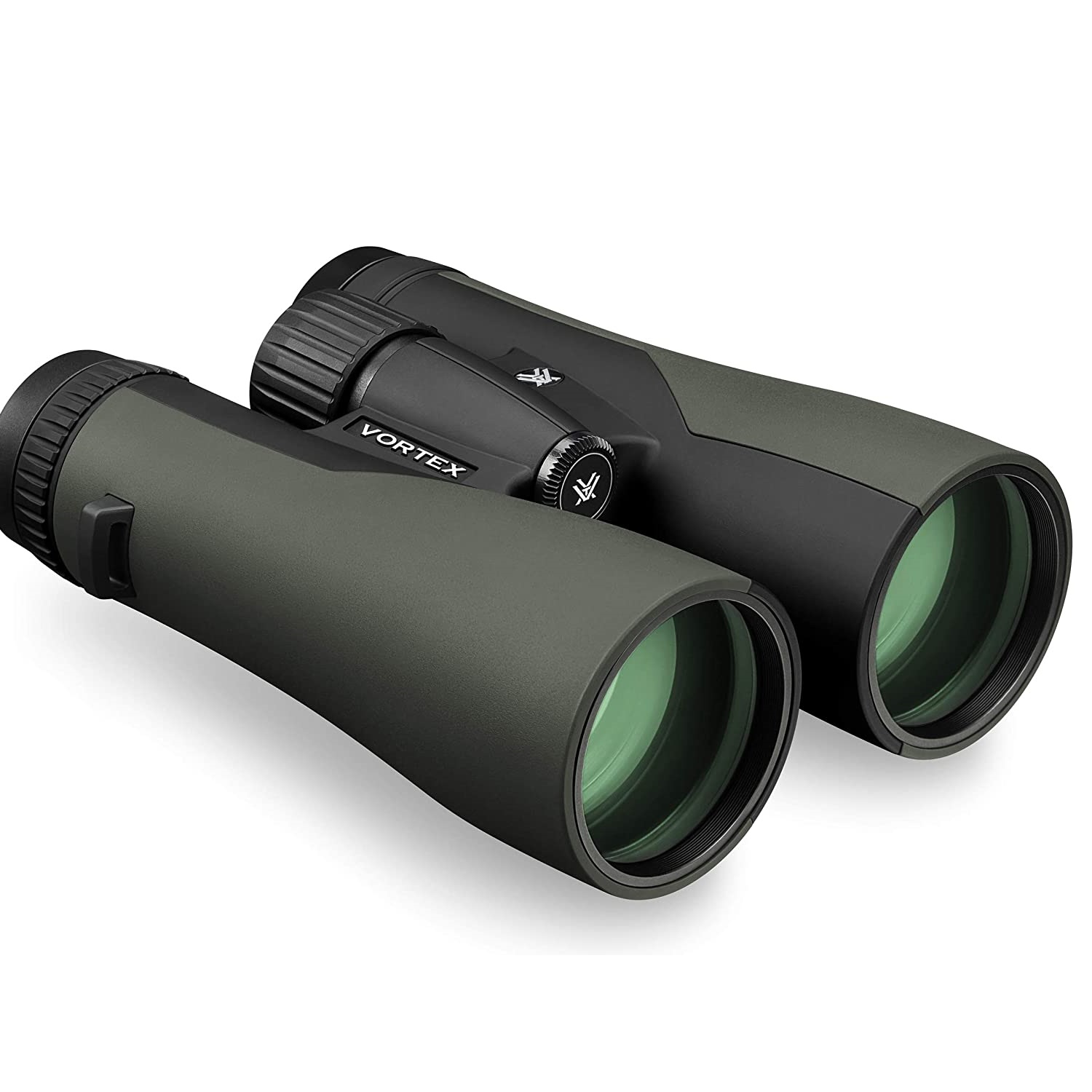
- Brand Vortex
- Material Aluminum
- 15 Millimeters
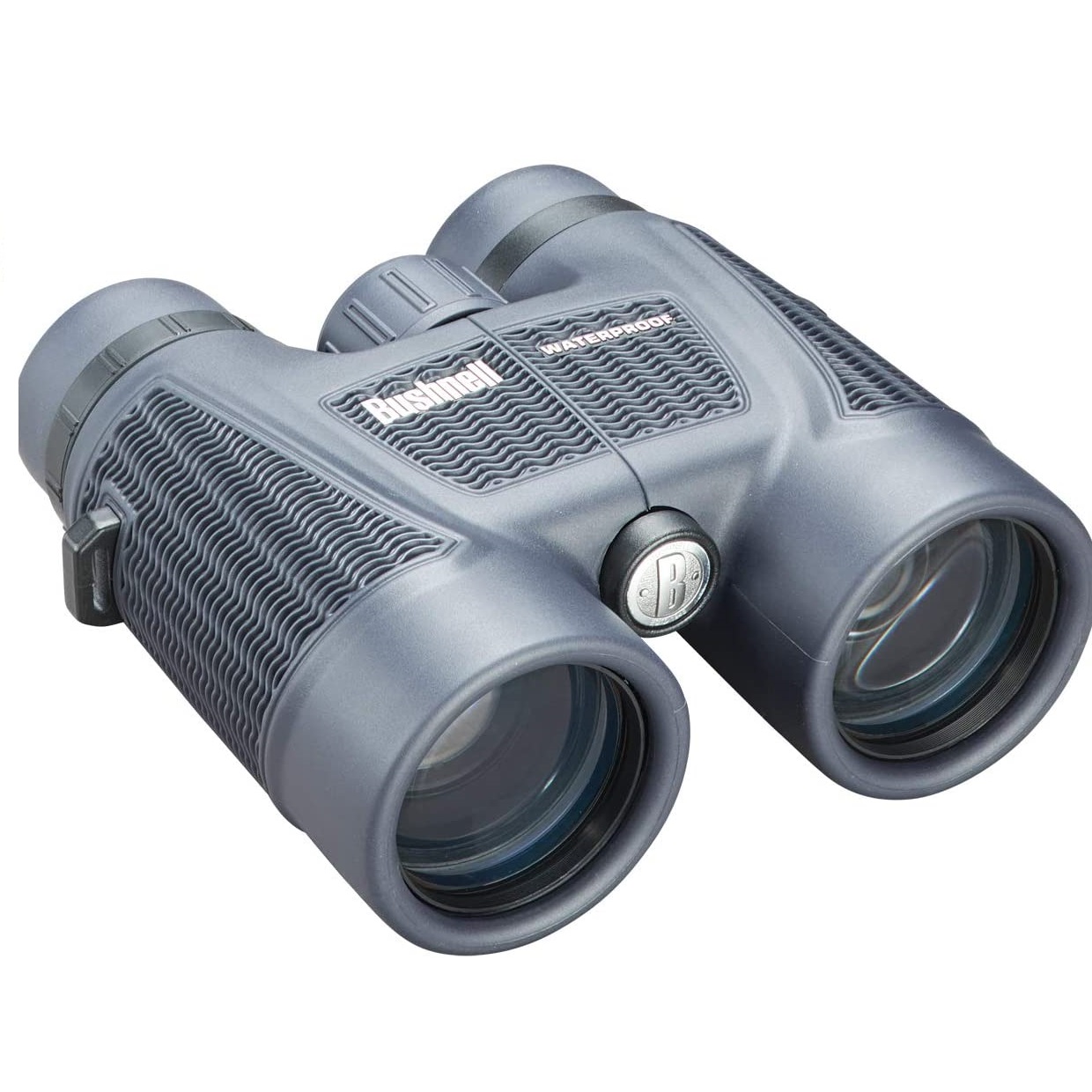
- Brand Bushnell
- Waterproof
- 17 Millimeters
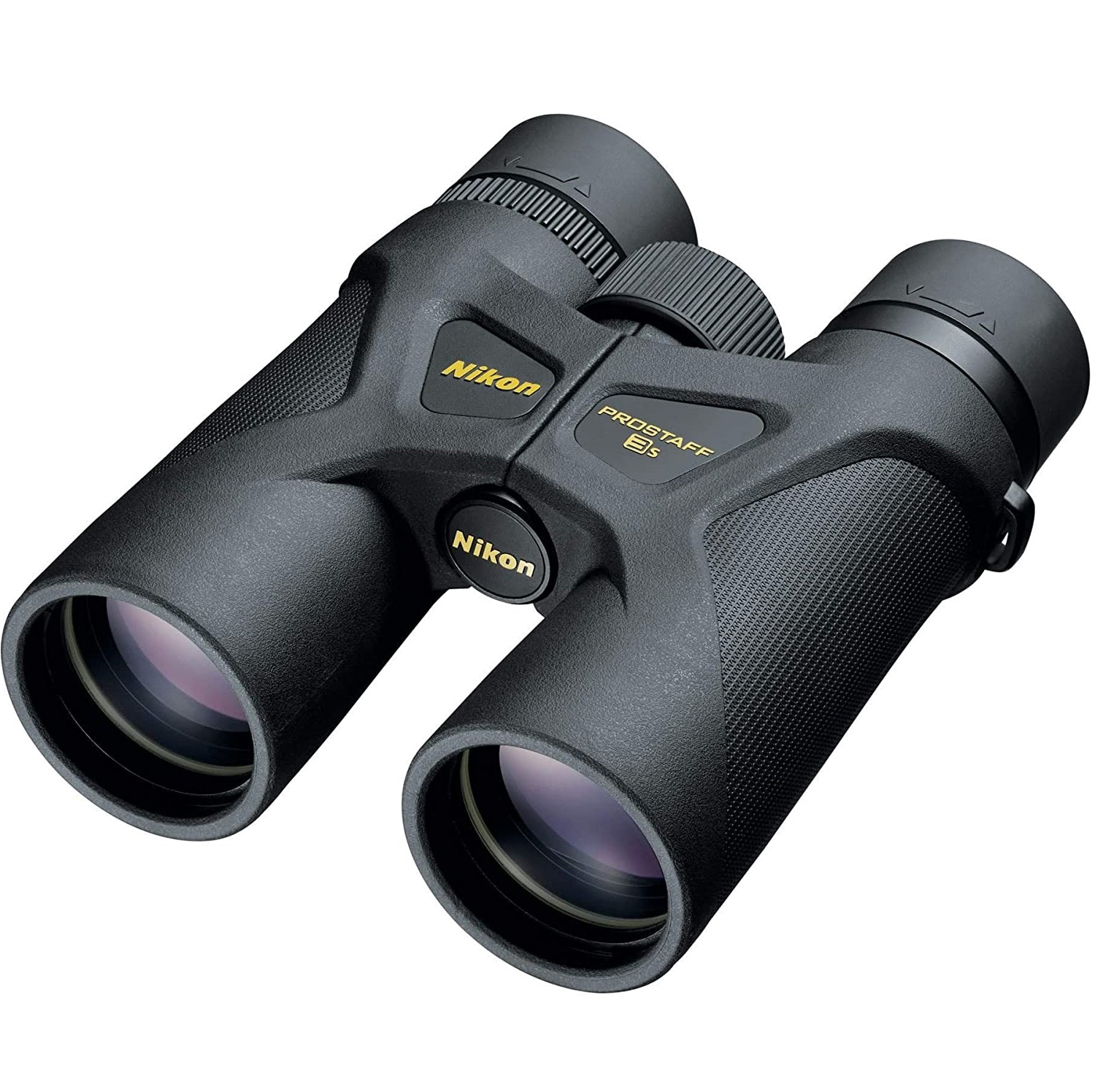
- Brand Nikon
- Color Black
- 15.7 Millimeters
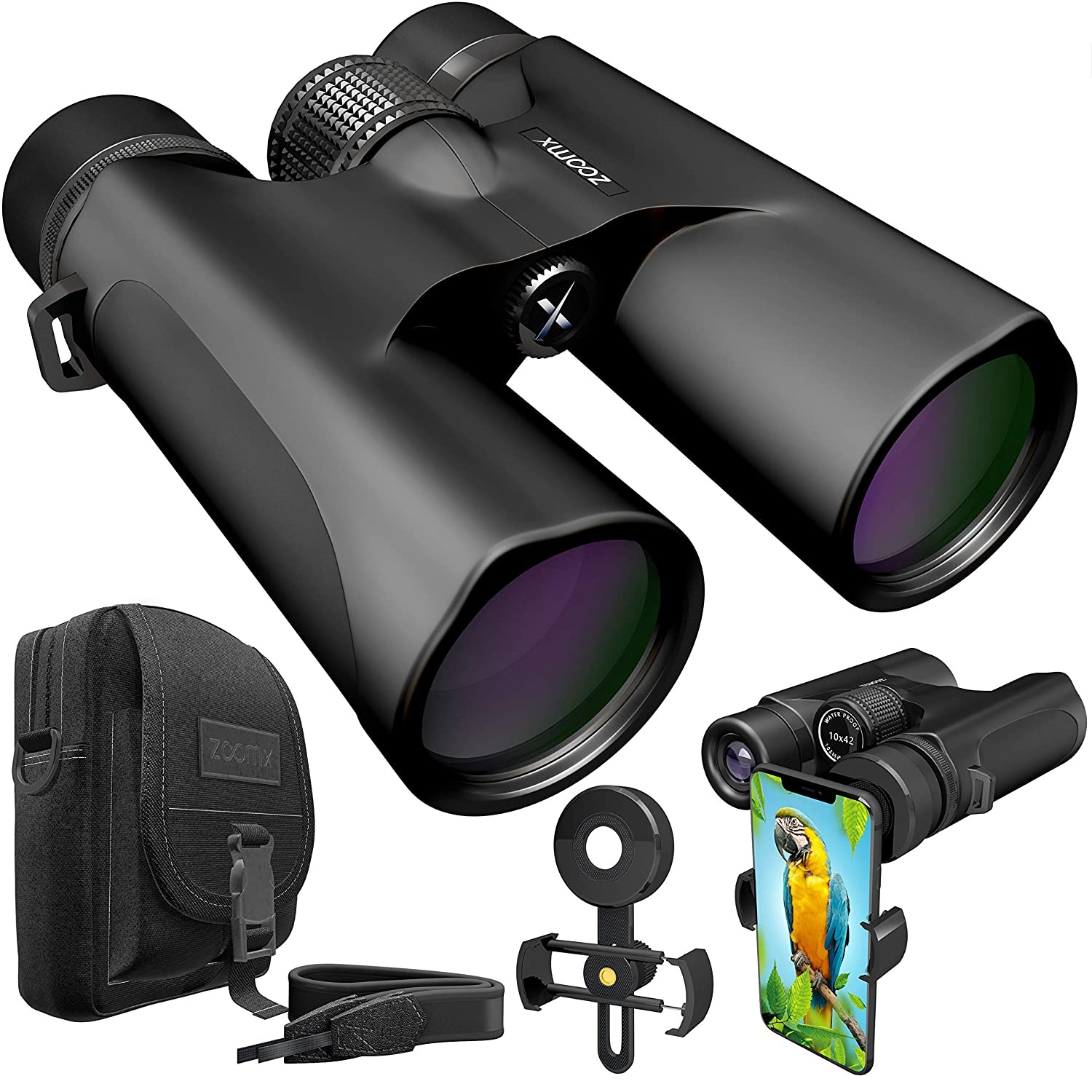
- Brand Stellax
- Color Black
- Waterproof

- Brand Bushnell
- Realtree Xtra Camo
- Waterproof
Choose the Best Hunting Binocular Under $200
Customer’s Choice: the Best Rated Hunting Binoculars Under $200
2 users answered this survey. Please help us improve this review!
Are you in the market for a new pair of hunting binoculars but don’t want to spend a fortune? In this guide, we will discuss some of the best hunting binoculars under $200. We’ll answer some common questions and provide some useful tips to help you choose the right pair of binoculars for your needs. So whether you’re a beginner or an experienced hunter, read on!
Table of Contents
Vortex Optics Crossfire HD Binoculars
 They are an excellent choice for those looking for great binoculars on a budget.
They are an excellent choice for those looking for great binoculars on a budget.Featuring a durable and rugged design, they are built to withstand the rigors of hunting and outdoor use. Thanks to their FMC lenses, they offer bright and clear images, even in LL conditions.
They are perfect for long-range spotting and tracking game.
Features
- Dimensions LxWxH 9.2 x 7.6 x 5 inches
- Weight 29.5 Ounces
- Green
- Aluminum
- 12x magnification, 50mm obj. l.
- Roof prism design
Bushnell H2O Roof Prism Binoculars
 If you’re looking for a great pair of binoculars that won’t break the bank, then you’ll want to check out the Bushnell H20. They are specifically designed for hunting, and they offer an impressive array of features for the price.
If you’re looking for a great pair of binoculars that won’t break the bank, then you’ll want to check out the Bushnell H20. They are specifically designed for hunting, and they offer an impressive array of features for the price.
They are available in both eight-power and ten-power models, so you can choose the perfect level of magnification for your needs. They also feature FMC optics with superior clarity. And since they’re waterproof and fogproof, you won’t have to worry about them getting wet or foggy in any conditions.
Features
- Dimensions LxWxH 7x6x3 inches
- Weight 709 Grams
- Black
- Rubber
- ER 17 mm
- EP: 4.2 mm / 0.165 inch
- FoV 305/102 ft at 1000 yds/m at 1000 m
- 10x magnification, 42 mm obj. diameter; 12 ft focus distance
PROSTAFF 3S 10×42
 The PROSTAFF are a great choice for anyone on a budget. The PROSTAFF model is available in both black and camouflage, making it a versatile option for different types of hunting.
The PROSTAFF are a great choice for anyone on a budget. The PROSTAFF model is available in both black and camouflage, making it a versatile option for different types of hunting.
The lenses are FMC, which allows for better light transmission and brighter images. The optics are also Bak-Four prisms, which provide excellent image quality.
Features
- Dimensions 3.23 x 6.14 x 7.09 inches
- Weight 4.8 ounces
- Black
- Plastic
Stellax ZoomX Binoculars for Adults 10×42 Waterproof Binocular Prism BAK4 FMC Lens HD Binoculars with Smartphone Adapter Carrying Bag
 They offer a great zoom feature. They’re also waterproof and have a durable construction that can withstand even the most challenging hunts. Plus, they come with a smartphone adapter so you can capture those perfect moments in HD. And when you’re done hunting, simply pack them up in the included carrying bag and hit the road.
They offer a great zoom feature. They’re also waterproof and have a durable construction that can withstand even the most challenging hunts. Plus, they come with a smartphone adapter so you can capture those perfect moments in HD. And when you’re done hunting, simply pack them up in the included carrying bag and hit the road.
Features
- Dimensions 6 x 2.1 x 5 inches
- Weight 1.2 pounds
- Black
- Rubber
- Porro Prism
- Magnification power: 10x
- Objective diameter: 42mm
- Eyepiece Diameter: 18mm
- View Angle: 5.8
- FoV: 305 FT / 1000YDS
Bushnell 334211 Trophy Binocular, Realtree Xtra, 10x42mm
 If you are looking for a good pair of binoculars for hunting, this one should be at the top of your list. This is a full-sized binocular with 42mm obj. lenses that provide a clear image. It also has a wide FoV, making it easy to track game.
If you are looking for a good pair of binoculars for hunting, this one should be at the top of your list. This is a full-sized binocular with 42mm obj. lenses that provide a clear image. It also has a wide FoV, making it easy to track game.
Features
- Dimensions 0.39×0.39×0.39 inches
- Weight 1.58 pounds
- Rubber
- Roof Prism
- 10x magnification; 330′ FoV
Buyer’s Guide
What to Look for In Binoculars
When purchasing binoculars for hunting, there are a few things to think about. First, it’s essential to pick binoculars that offer a high level of magnification. Second, you must ensure that the binoculars are light and comfortable to carry. Finally, you should check to see whether the binoculars have a lengthy guarantee. This is important because you do not want to have to replace your binoculars if they break after a short period of time.
A Clear Picture
A bright image is one of the most crucial things to search for in binoculars. You want to be able to see your target clearly so that you can take an accurate shot. There are a few things that you can do to make sure that you have a clear picture. First, ensure that the lenses are clean. Second, ensure that the binoculars are set at the right magnification. Finally, you must ensure that the lighting conditions are ideal. If it is too dark or too bright, it will be difficult to see your target.
A Reasonable Zoom
The zoom range is the most crucial aspect to consider. You’ll want a pair of binoculars that can zoom in enough to get a clear view of your target, but not so much that they become difficult to hold steady. A good rule of thumb is to look for a pair of binoculars with a magnification of no more than ten times the length of the longest side of the objective lens. For example, if you need a pair of binoculars with an objective lens that is 40mm long, you’ll want a maximum magnification of 400x.
A Comfortable Weight
One thing you’ll want to consider when purchasing binoculars is the weight. You don’t want something that’s too hefty or bulky, as this will make it difficult to carry with you on a hunt.
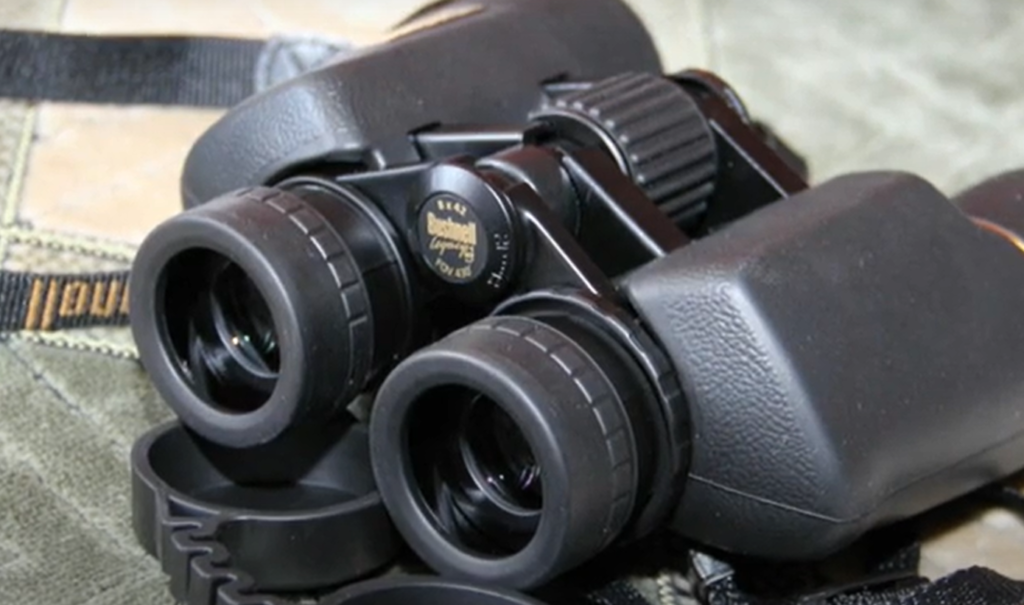
But at the same time, you don’t want something that’s so light and flimsy that it feels like it could break easily.
Intuitive Adjustability
The most significant factor to consider while shopping for binoculars is how simple they are to alter. You don’t want to be fiddling with knobs and levers when you should be focused on the game. Look for a pair that can be easily adjusted with one hand so you can make quick changes on the fly.
Another thing to consider is the interpupillary distance adjustment. This is what allows you to change the distance between the lenses to match your own eyesight. If this isn’t adjustable, then you run the risk of not being able to see through the binoculars at all. Most models will have some form of IPD adjustment, but it’s worth double-checking to be sure.
The final adjustment to look for is the diopter. This is a knob or lever that lets you fine-tune the focus of the binoculars independently of each eye. This is important because everyone’s eyesight is slightly different and you may need to adjust the focus differently for each eye.
Some higher-end models will also have an eyecup adjustment. This lets you change how far away from your eyes the lenses are, which can be helpful if you wear glasses or sunglasses. Not all binoculars will have this feature, but it’s something to keep in mind if you need it. [1]
Finally, make sure the binoculars feel comfortable in your hands. You’re going to be holding them for long periods of time, so they should feel balanced and not too heavy. The buttons and controls should also be easy to reach and use without taking your eyes off the action.
Factors To Consider When Choosing the Best Binoculars for Hunting Under $200
When you are looking for the best binoculars for hunting, there are a few factors that you will need to take into account. In this section, we will go over some of the most crucial factors that you should consider before making your purchase.
Quality
The quality of binoculars is one of the most vital elements to consider when selecting them. Make sure that you are getting a product that is made from high-quality materials and that has been designed to last.
There are a few different ways that you can determine the quality of the binoculars. First, you can look at the reviews that have been left by other customers. This can give you an idea of what others think about the quality of the product.
Another way to determine the quality of the product is to look at the warranty. Most companies that sell high-quality products will offer a warranty on their products.
Finally, you can also ask around. Talk to people who have purchased binoculars in the past and see what they thought about the quality of the product. This can give you a good idea of what to expect from the product before you make your purchase.
Brand
Another factor that you need to consider when choosing binoculars is the brand. There are a lot of different brands out there, and each one has its own strengths and weaknesses.
You will want to do some research on the different brands before you make your purchase. Read reviews, compare prices, and look at the features that each brand offers. This will assist you in narrowing down your selection and locating the best binoculars for your requirements.
Once you have narrowed down your choices, you can then start looking at the individual products. Compare the features, prices, and reviews to find the perfect product for your needs.
These are just a few of the factors that you need to consider when choosing binoculars. If you take the time to consider these factors, you will be able to find the perfect pair for your needs.
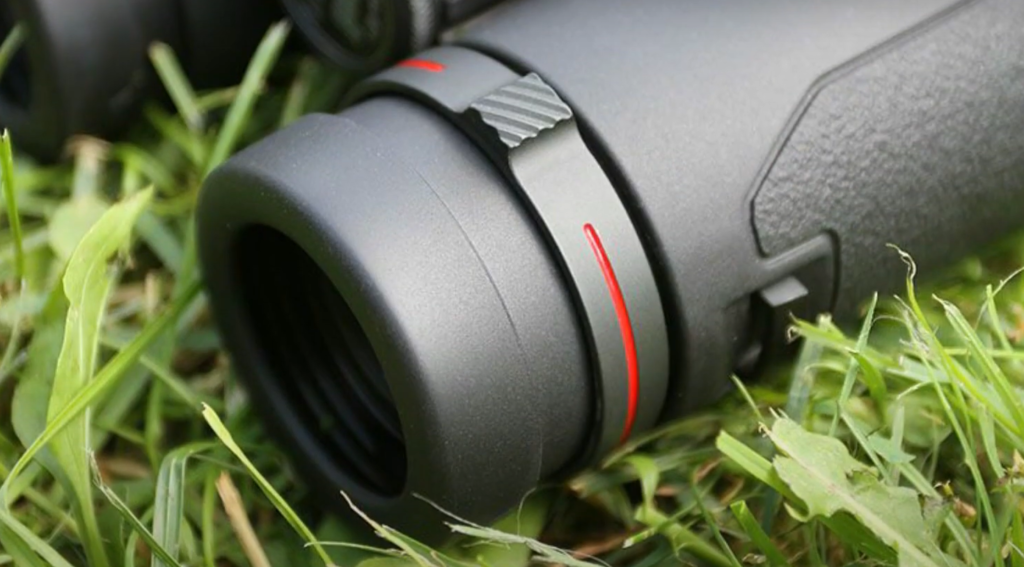
If you are still having trouble finding the perfect pair, you can always ask for help from a professional. They will be able to help you narrow down your choices and find the perfect product for your needs.
Magnification
Magnification is one of the most crucial aspects to consider while selecting binoculars. The magnification is the number that is printed on the side of the binoculars. It tells you how many times larger an object will appear through the binoculars than it would without them.
The higher the magnification, the more detail you will be able to see. However, you need to be careful not to get too much magnification. If you do, you will have a hard time seeing objects that are far away.
The magnification is usually between six and ten power, and it’s the first number you see when looking at binoculars.
For example, if you see “12×42” that means the binoculars have 12x magnification and an objective lens of 42mm.
As a general rule of thumb, the more magnification you have, the better.
But there are trade-offs. More magnification means the image will be shakier and harder to hold steady.
Objective Lens
One question you’ll want to ask yourself is how large of an objective lens do you need?
The size of the obj. lens is measured in millimeters and usually falls between 28mm and 56mm.
A larger objective lens will let in more light, which is important for low-light conditions, but it also makes the binoculars heavier and more difficult to hold steady.
But if you don’t think you’ll be doing much hunting in low-light or if you have shaky hands, then you can get away with a smaller objective lens.
For most hunters, a 42mm or 44mm objective lens is plenty.
Exit Pupil
An exit pupil is the light that comes out of the ocular lens (eyepiece). It’s the little round spot of light you see when you look through binoculars. The bigger the exit pupil, the better, because it means more light is getting to your eye. A larger exit pupil also makes it easier to find and hold the image steady.
It is calculated by dividing the obj. lens diameter by the magnification. So, if you have a pair of binoculars with an obj. lens diameter of 30mm and a magnification of 15x, then the exit pupil would be 30mm/15x = 2mm.
Most binoculars have an EP between two and eight millimeters. For hunting, you want something on the higher end of that range, preferably around six or seven millimeters. But keep in mind that exit pupil is affected by the distance between your eyes and the ocular lenses (eyepieces). The further away your eyes are from the eyepieces, the larger the EP will appear. So, if you’re wearing glasses or sunglasses, you might need to get a pair of binoculars with a larger EP to compensate for the extra distance.
Relative Brightness Index
The Relative Brightness Index (RBI) is a number that essentially tells you how bright an object appears through your binoculars. It’s calculated by dividing the square root of the EP diameter by the magnification.
This number doesn’t tell you everything about how bright an image will appear through your binoculars but in general, a higher RBI means a brighter image. [2]
Field of view
The FoV is one of the most crucial features to consider when purchasing hunting binoculars. You want to make sure you have a wide enough FoV so that you can see your prey from a distance. A good rule of thumb is to choose a pair of binoculars with a FoV of at least 1000 yards.
The higher the magnification, the narrower the FoV will be. So if you’re looking for binoculars that will allow you to see your prey up close, choose a pair with high magnification. But keep in mind that high-magnification binoculars can be more difficult to use, so they might not be the best choice for beginners.
Eye Relief
One of the most important specs to look for is eye relief. This is the distance between the eyes and the eyepiece lenses. If you wear glasses, you’ll need a minimum of 15mm of eye relief.

Most binoculars have an eye relief of between 14-17mm which is fine if you don’t wear glasses.
Adjusted eyecups are available on some binoculars, allowing you to fine-tune the eye relief. This is a great feature to have if you share your binoculars with someone who has a different prescription.
Eye Cups
The eye cups are one of the most significant aspects of any binocular. They need to be comfortable, and they need to be able to block out any outside light. There are diverse types of eye cups, and you’ll need to decide which one is right for you.
There are three main types of eye cups: twist-up, pop-up, and folding. Twist-up eye cups are the most common type. They’re easy to use, and they’re very adjustable. Pop-up eye cups are less common, but they’re still a good option. They’re a little more difficult to adjust, but they offer a better seal against outside light. Folding eye cups are the least common type, but they’re the most compact.
Prism type
Porro and Roof prisms are the two most common types of prisms used in binoculars.
Porro prism binoculars are the more traditional, where the lenses are offset from each other. This gives them a characteristic “bulging” look. They are less expensive than roof prism binoculars, but they are also slightly heavier and bulkier.
Roof prism binoculars have lenses that are aligned with each other, which gives them a sleeker look. They are typically more expensive, but they are also lighter and more compact.
Optical Coatings
The quality of the optical components is one of the most significant factors to consider. Most decent binoculars will have some sort of optical coating, which helps to reduce glare and improve light transmission. However, you’ll want to make sure that the coatings are high quality, as this can make a big difference in image quality. Look for terms like “fully multi-coated” or “multi-coated.” These indicate that all of the lenses have been coated with multiple layers of anti-reflective material.
Not all optical coatings are created equal. There are different types of coatings, each with its own pros and cons. For instance, “phase correction” coatings are designed to improve the contrast and sharpness of images. However, they’re also more susceptible to damage from cleaning.
Focus and Adjustment
The focus and adjustment on binoculars are extremely important for hunters. Most binoculars have a diopter that helps to adjust the focus for each eye. This is important because it allows the hunter to see clearly without having to strain their eyes. Additionally, many binoculars have a center focusing knob that helps to bring both images into sharp relief at the same time. This is especially helpful when tracking game or scanning an area for potential prey.
Finally, most binoculars also have an eyecup that can be adjusted to fit snugly against the hunter’s face. This is important for two reasons: first, it blocks out any extraneous light that could interfere with seeing clearly; and second, it prevents the hunter’s eyes from fatigue. By blocking out the light and preventing eye fatigue, the hunter is able to stay focused on their prey for longer periods of time.
Image Quality
The number one priority when choosing hunting binoculars should be image quality. After all, what’s the point of having binoculars if you can’t see anything through them? You’ll want to ensure that the binoculars you choose have good light gathering ability and low light performance. Image stabilization is also a feature to look for if you plan on using your binoculars in low light conditions.
Portability (Size and Weight)
When it comes to binoculars, one of the most significant factors to consider is their mobility. You want a pair that is small and light enough to take with you on your hunts, but also powerful enough to give you a clear view of your prey. The best hunting binoculars will strike a balance between these two factors.
One way to determine the portability of a pair of binoculars is to look at their size and weight. Most binoculars will have these specs listed in their product description.
Another way to gauge the portability of binoculars is to read reviews from other hunters. Many reviewers will mention how easy (or difficult) it was to carry the binoculars with them on their hunts. This can be a good indicator of how portable the binoculars really are.
In general, you want a pair of hunting binoculars that weighs less than three pounds and has dimensions no larger than eight inches by six inches. Anything beyond this is likely to be too bulky and cumbersome to take with you on a hunt.
Waterproof & Fogproof
Most high-quality binoculars will be both waterproof and fog-proof. This means they can withstand being submerged in water for a period of time, as well as prevent moisture from building up inside the lenses.
This is an important feature to look for, especially if you plan on using your binoculars in humid or wet conditions. No one wants their vision obscured by water or fog!
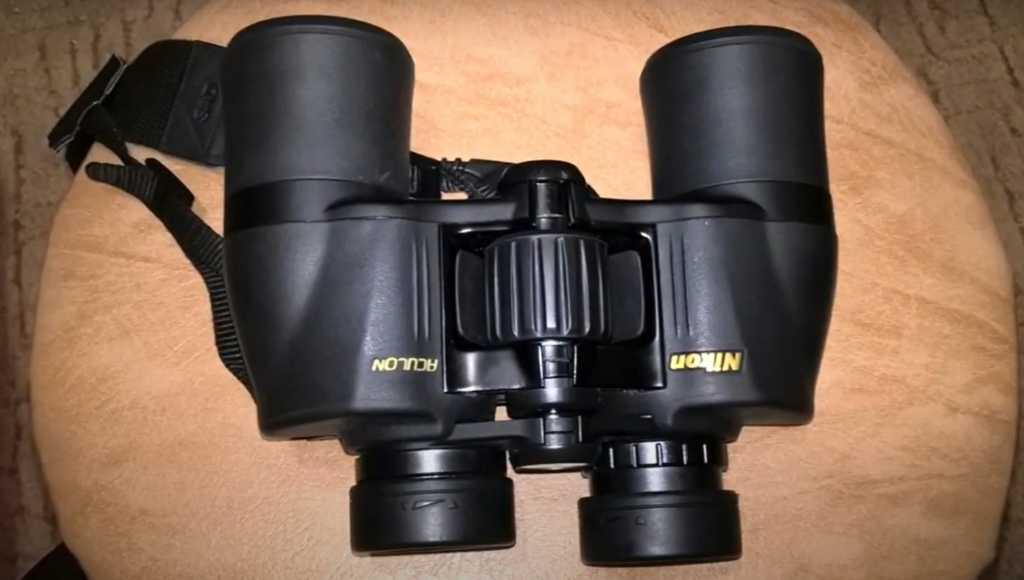
Waterproof and fog-proof binoculars will also have better longevity, as they’re less likely to suffer from lens damage due to moisture.
Ruggedness
One of the main reasons you need binoculars while hunting is to get a clear view of your prey from a distance. This means that you will likely be using them in all kinds of weather conditions, which is why it is important to ensure that they are rugged and can withstand being dropped or getting wet.
Waterproofing is especially important if you plan on using them in areas where there is a lot of snow or rain. Look for models that have been nitrogen-purged to prevent fogging, as this can be a real problem when trying to use binoculars in humid conditions.
Finally, make sure that the model you choose has comfortable eyecups that can be turned out for those who wear glasses. This will help to see clearly through the binoculars without having to deal with any discomfort.
Affordability
One of the main reasons why people don’t buy binoculars is because they think it’s too expensive. However, this doesn’t have to be the case as there are plenty of affordable options out there, especially if you know where to look. In this guide, we will be taking a look at some of the best hunting binoculars under $200 that offer great value for money.
So, whether you’re a beginner or an experienced hunter, make sure to read on for our top picks!
Type of Hunting That You Do
The type of hunting that you do is going to play a big role in the type of binoculars that you need. If you are someone who hunts game that is far away, then you are going to need a pair of binoculars with a lot of magnification. However, if you hunt smaller game that is closer to you, then you can get away with a pair of binoculars with less magnification. It all comes down to what you will be using them for.
Another thing to consider is the terrain that you will be hunting in. If you are going to be hiking through dense brush, then you are going to want a pair of binoculars that are compact and lightweight. However, if you are going to be hunting in open country, then you can get away with a pair of binoculars that are larger and heavier. It all comes down to personal preference and what you feel comfortable carrying around with you.
Hunting Specific Features
When it comes to choosing the best hunting binocular, there are certain features you should look for that are specific to hunting. The first is magnification. You’ll want a binocular with at least a magnification of eight, but more is always better. The next feature is objective lens size. This is the measurement of the front lenses and is usually given in millimeters. The larger the obj. lens, the more light that will be let in and the brighter the image will be. Finally, you’ll want to look for a binocular with an adjustable diopter. This allows you to fine-tune the focus of each eyepiece independently so that you can get a clear image no matter what your eyesight is like.
Reviews
Now that you know what to look for in a hunting binocular, it’s time to start reading some reviews. The best place to start is with your friends who are also hunters. Ask them what binoculars they use and why they like them. You can also read online reviews, but take them with a grain of salt. Sometimes people write negative reviews because they got a defective product or they’re just unhappy with the way their purchase turned out. If you see a lot of positive reviews for a particular binocular, then it’s probably worth checking out.
Accessories
There are a few accessories that can come in handy when using binoculars. The first is a tripod. If you’re going to be spending any length of time glassing an area, it’s worth investing in a tripod to keep your hands free and prevent fatigue. Another accessory to consider is a carrying case. This will protect your binoculars from the elements and make them easier to transport.
Special Lens Coatings
One of the most important features of a good pair of binoculars is the quality of the lens coatings.
This is especially important when hunting in LL conditions. Some of the best hunting binoculars under $200 will have special lens coatings that help to improve image quality.[3]Rangefinder Binoculars
Rangefinder binoculars are designed to help you find your target quickly and accurately. They use laser technology to measure the distance to your target, so you can be sure that you’re getting the most accurate shot possible.
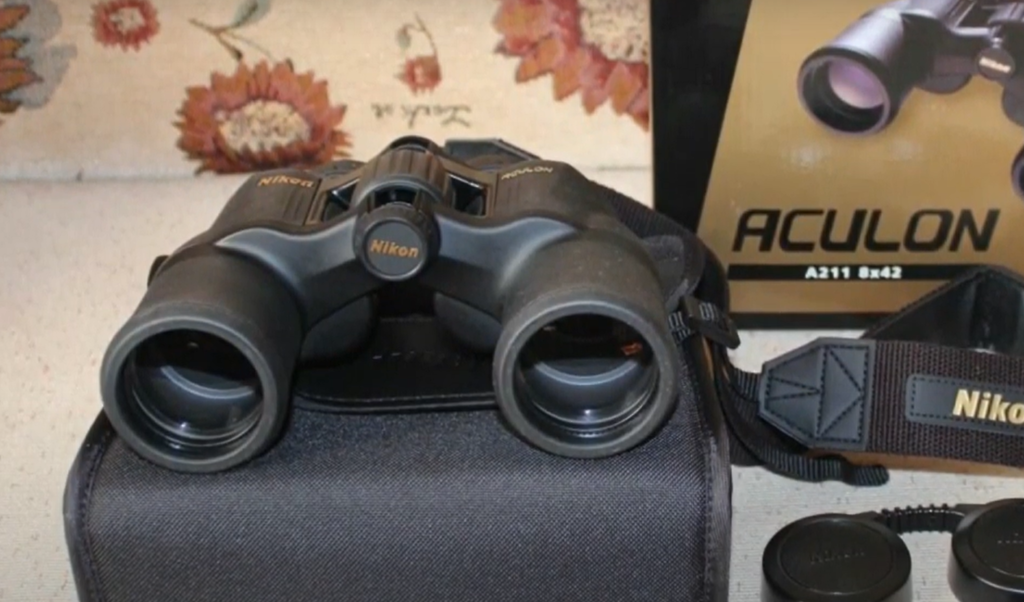
There are a few things to keep in mind when shopping for rangefinder binoculars. First, you’ll want to make sure that the model you choose is compatible with your specific gun. Second, you’ll want to pay attention to the magnification level of the binoculars. The higher the magnification, the further away your target will appear. Finally, keep in mind that rangefinder binoculars can be heavy, so you may want to consider a lighter model if you plan on carrying them for long periods of time. [4]
FAQ
What power of binocular is best for hunting?
The power of binoculars is measured in terms of the magnification it offers. For hunting, you’ll want a pair of binoculars with at least a magnification x8 or x10. However, if you want to do any long-distance viewing, you should invest in a pair of binoculars with even greater magnification.[5]
Keep in mind that while higher magnifications can be helpful, they can also make your binoculars more difficult to use. If you’re going to be using your binoculars for extended periods of time, you might want to consider a lower magnification so that you don’t get too fatigued.
Another thing to keep in mind is that higher magnifications will make it more difficult to hold binoculars steady. If you’re going to be using high magnifications, you might want to consider getting a tripod or some other type of stabilizing device.
Finally, remember that higher magnifications will also reduce the amount of light that enters the binoculars. This can make it more difficult to see in low-light conditions. If you think you’ll be doing a lot of hunting in LL conditions, you might want to consider a pair of binoculars with lower magnification.
In general, most hunters find that a pair of binoculars with seven times magnification is plenty for their needs.
What are the best binoculars for $200?
Magnification is one of the most significant aspects to consider when selecting binoculars. For hunting purposes, you’ll want something in the range of eight to ten times magnification. This allows you to see your target clearly while still being able to scan your surroundings.
Another important factor is the size of the objective lens. This is the part of the binoculars that actually gathers light, so a larger obj. lens will result in a brighter image. However, you also need to balance this with weight and portability considerations. For most hunters, something in the range of 30-40mm will be ideal.
Finally, you’ll want to consider things like eye relief and field of view. ER is particularly important for those who wear glasses, as it determines how far away from the eyepiece you can hold the binoculars while still seeing a clear image. A wider FoV is generally better for hunting purposes as it allows you to take in more of your surroundings at once.
Are 10×42 binoculars good for deer hunting?
Yes, they are. In fact, most deer hunters use binoculars with a power of at least ten times. This is because you need to be able to see your target clearly in order to take an accurate shot.
However, it is important to remember that there is such a thing as too much power. If you get binoculars that are too powerful, you will have a hard time keeping them steady. This is why many deer hunters prefer to stick with binoculars that have a power of no more than 12 times. [6]
Are 8X42 binoculars good for hunting?
Many hunters prefer binoculars with an eight-power magnification because they provide a good balance between light gathering ability and portability. [7]
In general, most experts agree that the best hunting binoculars are those that offer the greatest combination of light gathering ability, magnification, and portability.
Useful Video: Top 7 Best Binoculars Under 200 Dollars in 2020
Conclusion
There you have it, our guide. We hope you found it helpful and that you now have a better idea of what to look for when choosing your next pair of binoculars. If you’re looking for a great pair of binoculars for your next hunt, be sure to check out our list of the best hunting binoculars under $200. You won’t be disappointed! Thanks for reading! Happy hunting!
References:
- https://www.businesstoday.in/magazine/living-tech/story/binoculars-features-specifications-37049-2012-10-13
- https://oceannavigator.com/binocular-basics-explained/
- https://www.foreyes.com/blog/what-are-the-types-of-lens-coatings/
- https://www.optics-trade.eu/en/binoculars/hunting-binoculars/range-finding-binoculars.html
- https://argalioutdoors.com/advice/how-pick-best-size-binoculars-big-game-hunting-part-1
- https://worldbirds.com/best-binoculars-for-hunting/
- https://www.bowhunter.com/editorial/8×42-binoculars-whitetail-bowhunter/454011






Leave a Reply